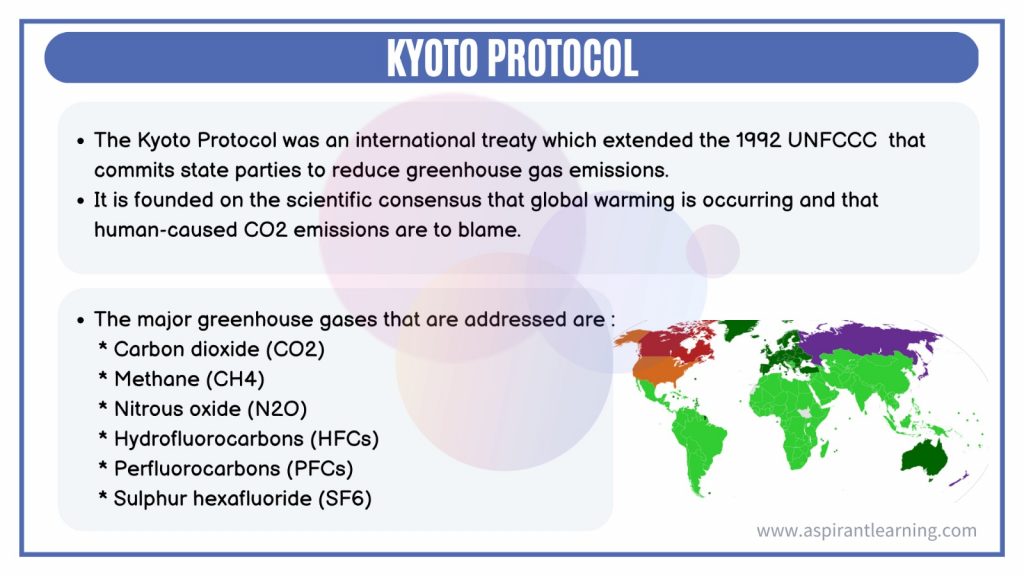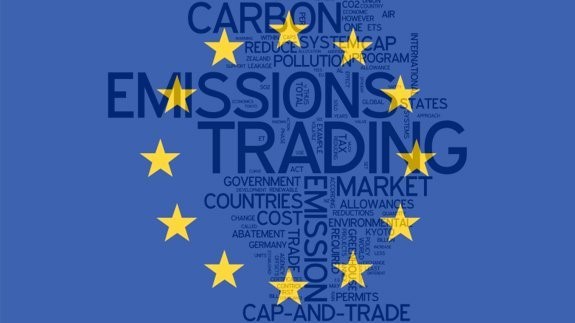News Highlight
The Centre is now in the final stages of notifying an Emissions Trading Scheme (ETS).
Key Takeaway
- The Government is in the final stages of notifying an ETS following the passage of the Energy Conservation (Amendment) Bill last December.
- It would oblige polluting firms to meet specified energy efficiency criteria and allow them to ‘trade’ these improvements.
- The notification specifying which sectors would be covered and the targets they would be set would be announced by June by two officials affiliated with the Power Ministry and Environment Ministry.
Emissions Trading Scheme
- About
- The ETS is a regulatory tool implemented in Surat.
- It is a market where particulate matter (PM) emissions are traded.
- Its goal is to reduce the pollutant load in a given area while lowering the business compliance cost.
- The Gujarat Pollution Control Board (GPCB) limits total emissions from all industries.
- Different industries can buy and sell the ability to emit PM under this cap by exchanging permits (in kg).
- As a result, ETS is also known as a cap-and-trade market.
- Significance
- Trade is necessary because the regulator will track pollution over time in a cap and trade-market.
- Industries must have enough permits to cover all of their emissions.
- If factories find it particularly costly to reduce emissions, they will strive to obtain more licences.
- In addition, polluters are urged to reduce their emissions because doing so will provide them with extra sales licences.
- Most pollution is finally reduced due to buying and selling between plants that find it affordable to reduce pollution and others that find it costly.
- Regardless of the final allocation, the overall number of permits remains constant, keeping total pollution under the predetermined limit.
- As a result, industrial expenses are decreasing.
Emissions Trading
- About
- Emissions trading is one of the United Nations Framework Convention on Climate Change’s so-called Kyoto Mechanisms (UNFCCC).
- Emissions trading is a market-based technique of reducing pollutant emissions by providing financial incentives.
- Carbon emission trading for CO2 and other greenhouse gases has been introduced in China, the European Union, and other countries as an important tool for reducing climate change.
- A central authority or governmental entity allots or sells a finite number of permits that enable the release of a specific quantity of a specific pollutant over a finite time period in an emissions trading scheme.
- Furthermore, polluters must have licences for an amount equal to their emissions.
Emission Trading – Provisions
- The total pollutant limit ensures environmental security.
- Respective emissions sources should be free to customise their compliance path to meet their needs.
- Incentives for innovation and efficiency that lower implementation costs.
- The ability to deposit excess credits as an incentive for early emission reductions.
- Additionally, administration costs are low.
- Tracking, reporting, and reducing emissions are all responsibilities.
Role of Emission Trading in Reducing Climate Change
- Emissions trading is largely viewed as a critical component of attempts to reduce man-made greenhouse gas emissions that cause climate change.
- Caps are set in response to scientific evidence of the emissions reductions needed to control climate change.
- It includes reaching the Paris Agreement goal of keeping temperature rising far below 2°C this century.
- For example, the European Union refers to its world-leading emissions trading system as “a cornerstone” of its climate change policy.

Conclusion
- Acceptance of emissions allowances for compliance, whether reciprocal or unilateral, can be used to connect disparate cap-and-trade systems.
- A broader carbon market is created through integrating systems, which can result in cheaper total compliance costs, more liquid markets, and a more stable carbon market.
- Connecting systems also serve a political symbolic function by displaying a common commitment to lowering GHG emissions.
- Connecting could also serve as the foundation for developing a new, bottom-up international climate policy architecture in which various diverse systems gradually connect.
Pic Courtesy: EPF
Content Source: The Hindu



